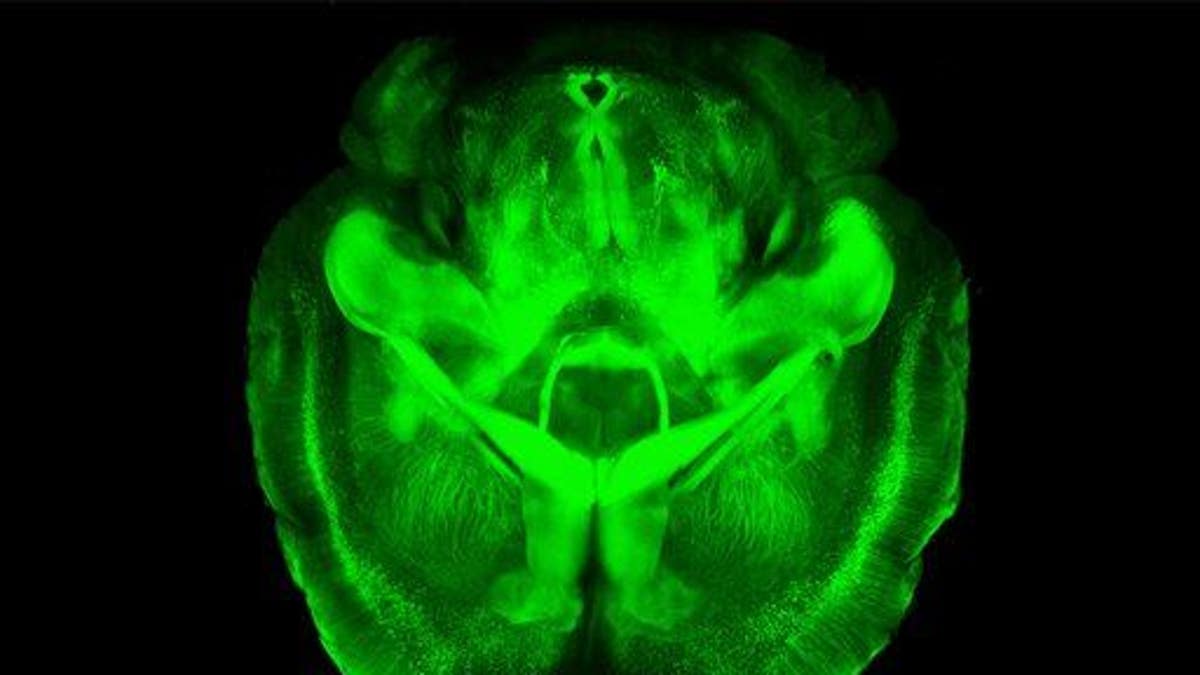
This undated image provided by Karl Deisseroth's lab shows a three-dimensional rendering of clarified mouse brain seen from below. (AP Photo/Karl Deisseroth)
Scared to death of spiders after you found one crawling in your bed? Scientists may have discovered a way for you to find them positively cuddly.
After identifying the neurons powered by positive and negative memories in mice, MIT neuroscientists found a way to use light to essentially rewrite a mouse's memories to "reduce the feelings of a bad memory they have or stress they have had," a study author tells the New York Times.
In one experiment, researchers gave a mouse a shock when it was in a certain part of an arena, creating a bad memory. When researchers light-activated the memory cells associated with positive memories, however, the mouse became more fond of the space, WebMD reports.
It worked the other way around, too, with researchers turning happy memories into negative ones in the brain's hippocampus. Experiments also turned up something "absolutely new": that neurons in the amygdala, which processes emotion, couldn't be manipulated, meaning they may be "prewired to reflect positive or negative emotions," the Times notes.
Though the findings strictly apply to mice, they help explain the success of psychotherapy and could lead to better treatment for issues like depression, as memories were changed "without any drugs and without the mice being brought back to the area where the memory occurred," a researcher says.
The idea of changing a traumatic memory in humans is "still science fiction," a scientist notes. "But with this, we're getting a lot closer to it." (The government has its own plan to fix our memories.)
More From Newser
